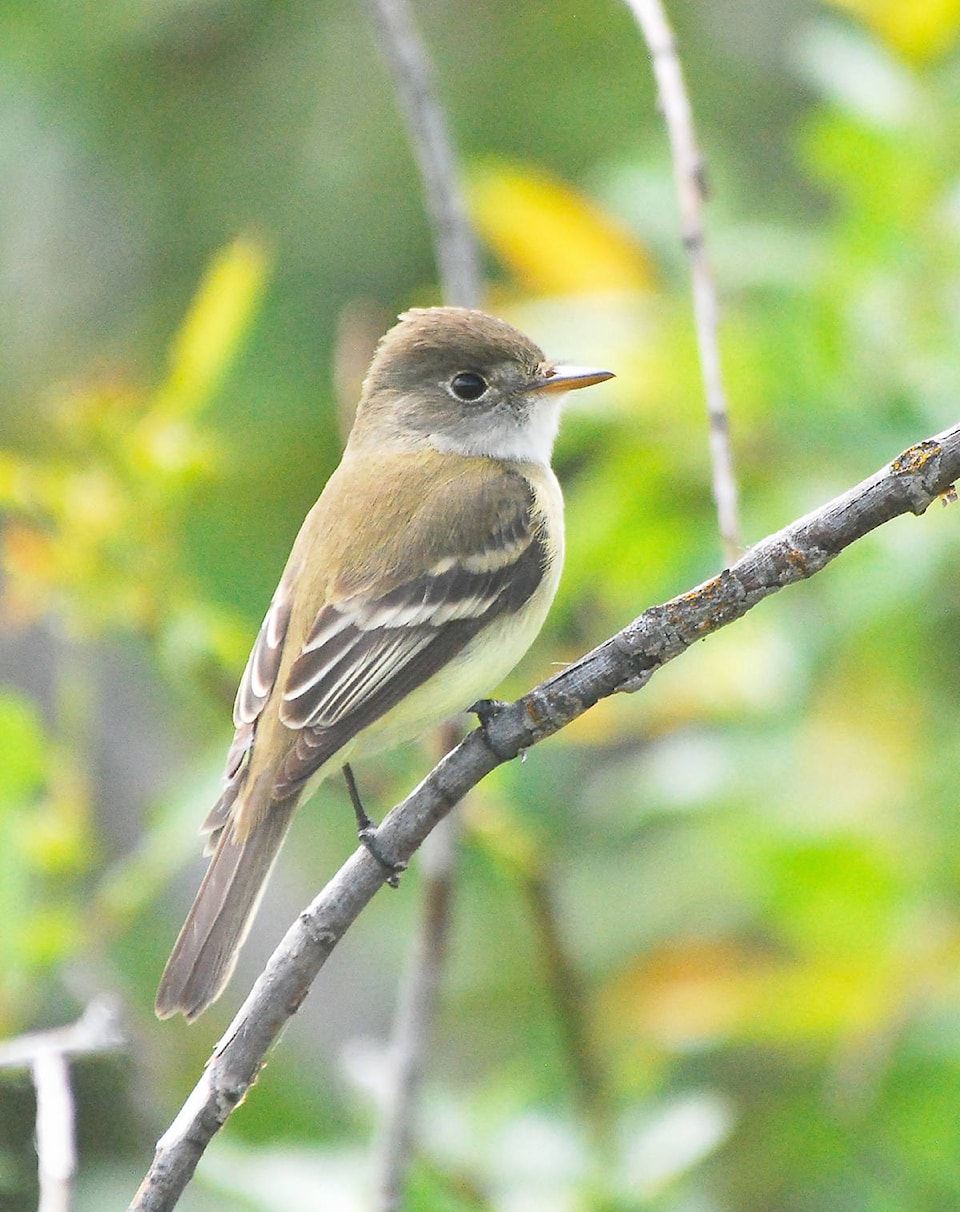In the last couple of weeks, Hammond’s Flycatchers have returned to our region.
Flycatchers are one of the most difficult groups of bird to learn, particularly those of the genus Empidonax. This group, known as the ‘empids’ by most birders, is conspicuously lacking in field marks and are very similar in appearance.
All empids are a shade of olive-grey on the back with pale, sometimes faintly yellow, undersides. All have pale bars in the wings and most have a white ring around the eye, more conspicuous in some than others.
The Hammond’s is a bird of the coniferous forest and is, therefore, the most common empid in our region. In damp places along streams and marshes the Willow Flycatcher is also quite regular.
Pacific-slope Flycatcher, Dusky Flycatcher and Least Flycatcher also occur in our region but are quite sparsely distributed. The Alder Flycatcher is quite rare here and is not seen every year.
This brings the empid total to six species, six species that are almost indistinguishable in the field. So how do birders tell one empid from another? The best method is by their song. The word song is perhaps used a little loosely here; the sounds that these birds make would hardly be considered a “song” by most people. But in some cases, even the song is of limited use.
The Hammond’s and the Dusky Flycatchers have songs that are so similar that even experienced birders can sometimes have difficulty separating them.
Habitat preference can sometimes be used to help separate these two birds: Hammond’s prefer coniferous forests; Dusky prefers drier, more open habitats. Since our region is dominated by coniferous forests, Dusky Flycatchers are not common here; they generally occur only in regenerating clearcuts when a good deciduous layer has developed. But even habitat is of limited use in places where drier open country and coniferous habitats, exist side by side, such as in the Castlegar-Trail region, and in the Okanagan Valley.
Identification by song, however, also has its limitations: birds only sing during the breeding season. Birds seen at other times of year are often silent, making identification extremely difficult. The photograph accompanying this article is actually a Willow Flycatcher, (I heard it sing), but judging by the photo alone, it would be very hard to identify.
A few years ago I was birding near the campsite at Box Lake and could hear a Hammond’s Flycatcher somewhere nearby. When I saw it, I was surprised to see it so close to the ground. This species typically feeds much higher in the trees. I noticed that the bird was repeatedly perching on the same branch and then almost immediately flying off. After observing this behaviour for a few minutes, I realised it was building a nest on that branch.
Hammond’s Flycatcher nests are hard to find; I had never seen one before, and have not seen one since. A couple of weeks later I returned and saw an adult bird sitting on the now completed nest. The nest was partially hidden by an overhanging branch and was very difficult to find, even though I knew it was there.
As the name suggests, flycatchers are insect-eating birds. Most of their food is taken in the air. Typically they sit on an open perch where they wait for a meal to fly by. With a quick burst they dash out, seize the prey, and quickly return to a perch to eat it.
Some species habitually return to the same perch each time. So, if you see a small drab bird behaving in this manner, you are probably watching a flycatcher. Turning to your field guide, however, in the hopes of identifying it, might lead to considerable frustration.
